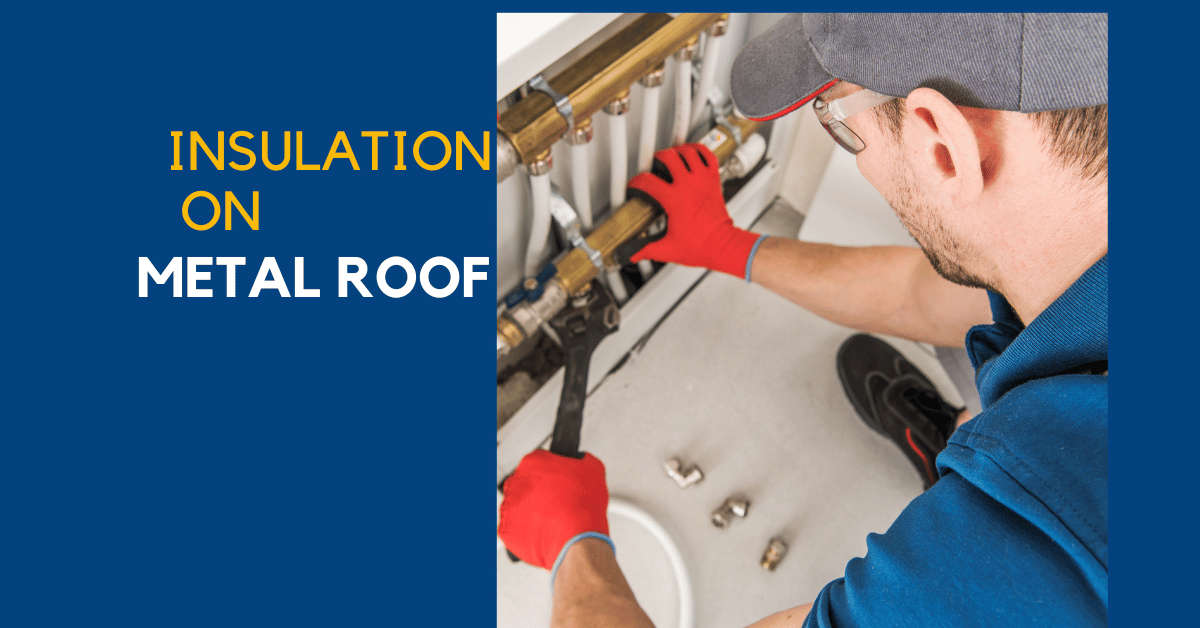Installing foam board insulation on a metal roof is a practical and effective way to enhance energy efficiency and improve the comfort of your building. Metal roofs are known for their durability and longevity, but they can also conduct heat, making insulation a crucial component. Foam board insulation offers excellent thermal performance, helping to keep your building warm in winter and cool in summer. This comprehensive guide will walk you through the process of installing foam board insulation on a metal roof, providing detailed instructions and tips to ensure a successful installation.
Why Insulate a Metal Roof with Foam Board?
Insulating a metal roof with foam board provides numerous benefits. It helps to reduce heat transfer, making your building more energy-efficient and comfortable. Foam board insulation is also lightweight, easy to handle, and offers high R-values, which measure the insulation’s effectiveness. By insulating your metal roof, you can lower energy bills, minimize noise from rain or hail, and prevent condensation issues that can lead to rust and structural damage.
Understanding Foam Board Insulation
Foam board insulation, also known as rigid foam, is a type of insulation made from solid plastic foam. It comes in various types, including expanded polystyrene (EPS), extruded polystyrene (XPS), and polyisocyanurate. Each type has unique properties, making it suitable for different applications. Foam board insulation is favored for its high insulating value, moisture resistance, and ease of installation, making it an ideal choice for metal roofs.
Types of Foam Board Insulation for Metal Roofs
Choosing the right type of foam board insulation for your metal roof is crucial for optimal performance. Here are the common types:
- Polystyrene (EPS): Lightweight and affordable, EPS offers good thermal resistance but has lower R-values compared to other types.
- Extruded Polystyrene (XPS): More durable and with a higher R-value than EPS, XPS provides excellent moisture resistance and structural strength.
- Polyisocyanurate (Polyiso): Offers the highest R-value per inch among foam boards, making it the most efficient insulator. Polyiso also has a foil facing that acts as a vapor barrier.
Understanding these differences will help you select the best insulation for your specific needs.
Preparing for Installation
Before beginning the installation, thorough preparation is essential. Ensure you have all the necessary tools and materials, and take appropriate safety measures. Working on a roof can be hazardous, so wearing safety gear such as harnesses, gloves, and safety glasses is crucial. Additionally, check the weather forecast to avoid working in adverse conditions, which can affect the installation process.
Materials Needed for Installation
To install foam board insulation on a metal roof, you’ll need the following materials:
- Foam board insulation panels
- Construction adhesive suitable for foam board
- Mechanical fasteners (screws or nails)
- Vapor barrier material (if not using polyiso with foil facing)
- Measuring tape
- Utility knife or insulation saw
- Safety gear (gloves, safety glasses, harness)
Having these materials on hand will streamline the installation process and ensure you are well-prepared for each step.
Step-by-Step Installation Process
The installation of foam board insulation on a metal roof involves several steps. Following this guide will help you achieve a professional and efficient installation.
Measuring and Cutting the Foam Boards
Start by measuring the dimensions of your roof to determine the size and number of foam board panels required. Use a measuring tape for accurate measurements. Once measured, cut the foam boards to fit the specific areas of the roof using a utility knife or an insulation saw. Precision in cutting ensures a snug fit, minimizing gaps that could compromise the insulation’s effectiveness.
Applying Adhesive to the Foam Boards
Apply construction adhesive to the back of each foam board panel. Choose an adhesive that is compatible with both foam board and metal surfaces. Spread the adhesive evenly to ensure a strong bond. This step is critical for securing the insulation to the metal roof and preventing any movement or detachment over time.
Securing Foam Boards to the Metal Roof
Place the adhesive-covered foam board panels onto the metal roof, pressing firmly to ensure good adhesion. Use mechanical fasteners, such as screws or nails, to secure the panels in place. Fasten them at regular intervals, ensuring stability and preventing any movement. Proper fastening is crucial for the insulation’s longevity and performance.
Sealing Joints and Gaps
After all the foam boards are in place, inspect the joints and gaps between the panels. Use sealing tape or spray foam insulation to seal these areas, preventing air leaks and enhancing the insulation’s efficiency. Proper sealing is essential to create a continuous insulation barrier, improving thermal performance.
Adding a Vapor Barrier
If you are not using polyiso foam board with a built-in foil vapor barrier, consider adding a separate vapor barrier. This barrier prevents moisture from entering the insulation, which can reduce its effectiveness and potentially cause damage. Install the vapor barrier over the foam boards, following the manufacturer’s instructions for optimal results.
Common Mistakes to Avoid
Avoiding common mistakes can ensure a successful insulation installation:
- Skipping the Adhesive: Not using adhesive can lead to loose panels and compromised insulation.
- Incorrect Measurements: Inaccurate measurements can result in poorly fitting panels, creating gaps and reducing efficiency.
- Inadequate Sealing: Failing to seal joints and gaps properly can lead to air leaks and reduced insulation performance.
By being mindful of these mistakes, you can ensure a more effective and durable installation.
Maintaining Foam Board Insulation
Regular maintenance of foam board insulation can prolong its lifespan and maintain its efficiency. Periodically inspect the insulation for any signs of damage, such as gaps, cracks, or loose panels. Repair any issues promptly to prevent further damage and maintain the insulation’s effectiveness. Additionally, ensure the vapor barrier remains intact to protect the insulation from moisture.
Benefits of Foam Board Insulation on Metal Roofs
Foam board insulation offers several advantages for metal roofs:
- Energy Savings: By reducing heat transfer, foam board insulation helps lower energy bills and improve indoor comfort.
- Noise Reduction: Foam board insulation can minimize noise from rain, hail, and other external sources, creating a quieter indoor environment.
- Durability: Foam board insulation is resistant to moisture, mold, and pests, ensuring long-lasting performance.
- Environmental Impact: Foam board insulation contributes to energy efficiency, reducing the overall carbon footprint of the building.
These benefits make foam board insulation a worthwhile investment for any building with a metal roof.
Cost Considerations
The cost of installing foam board insulation on a metal roof can vary based on several factors, including the type of insulation, roof size, and labor costs. While the initial investment may be higher compared to other insulation types, the long-term energy savings and durability can offset these costs. Conducting a cost-benefit analysis can help determine the best insulation choice for your budget and needs.
Environmental Impact of Foam Board Insulation
Foam board insulation can have both positive and negative environmental impacts. On the positive side, it enhances energy efficiency, reducing greenhouse gas emissions from heating and cooling systems. However, the production of foam board insulation involves the use of chemicals and non-renewable resources. Choosing eco-friendly options, such as insulation made from recycled materials or with low global warming potential (GWP) blowing agents, can mitigate these impacts.
Conclusion
Installing foam board insulation on a metal roof is a practical and effective way to enhance energy efficiency, improve indoor comfort, and protect your building. By following the step-by-step guide provided, you can achieve a professional and durable installation. Understanding the different types of foam board insulation, preparing adequately, and avoiding common mistakes will ensure a successful project. Regular maintenance and mindful material choices further contribute to the long-term benefits of foam board insulation on metal roofs.

